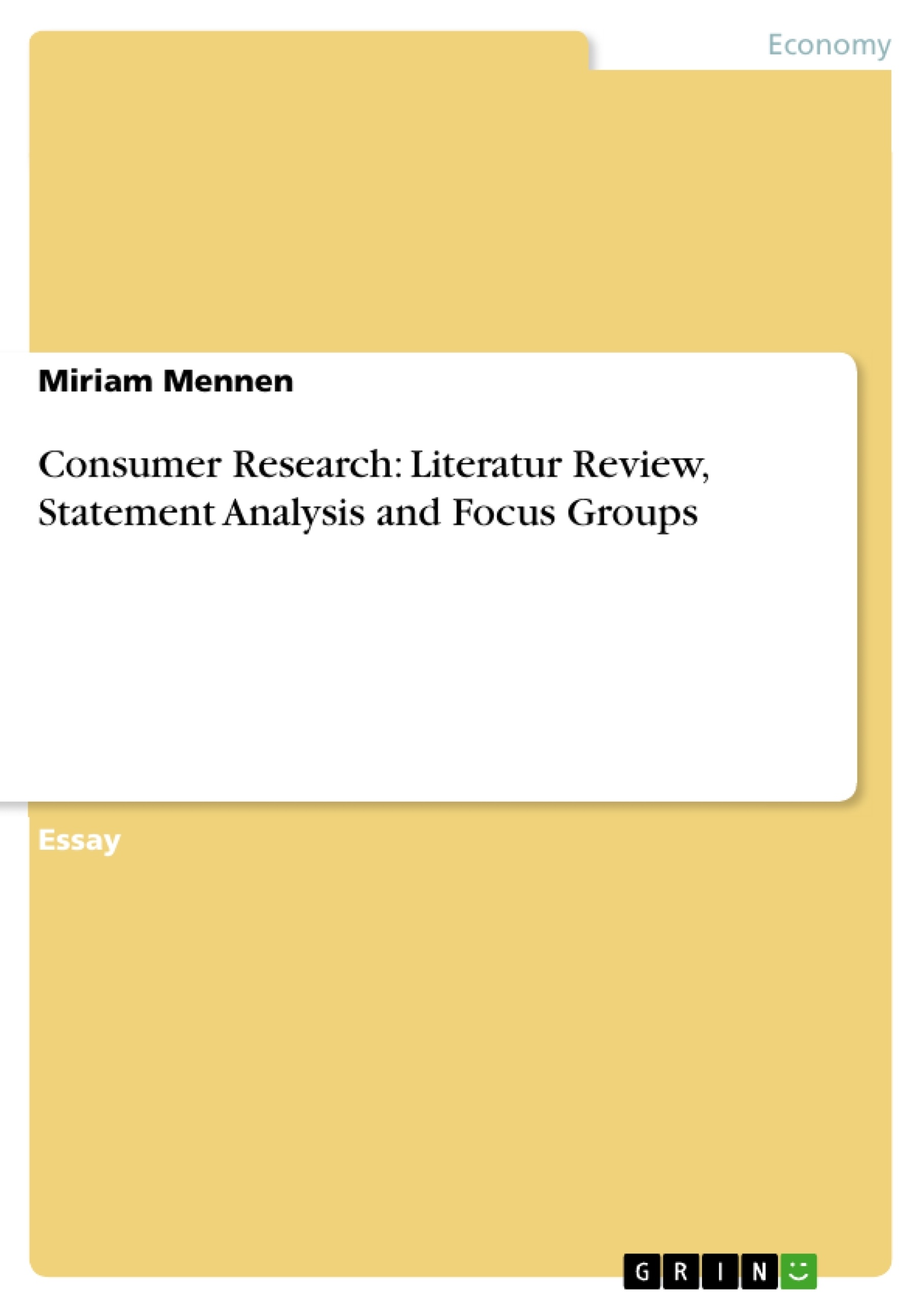This essay consists out of three parts.
Part one: Literature Review ‘Consumer Perceptual Processes'
Part two: Statement Analysis, ‘As a part of our marketing strategy we introduce new products very frequently'
Part three: Focus Groups, Applied Example
Inhaltsverzeichnis (Table of Contents)
- PART ONE
- Literature Review on ‘Consumer Perceptual Processes’
Zielsetzung und Themenschwerpunkte (Objectives and Key Themes)
This research paper aims to explore the concept of consumer perceptual processes and its significance in marketing. The paper investigates how consumers perceive value in products and services, emphasizing the role of customer perceived value (CPV) in shaping buying decisions.
- Defining and understanding 'value' and 'perception' in marketing terms.
- Analyzing the importance of customer perception in marketing strategies.
- Exploring the relationship between consumer needs, motivation, and perception.
- Investigating the stages of the consumer buying decision process.
- Examining the influence of cultural, social, personal, and psychological factors on consumer perception.
Zusammenfassung der Kapitel (Chapter Summaries)
- PART ONE: Literature Review on ‘Consumer Perceptual Processes’: This section begins by defining the terms 'value' and 'perception' within the context of marketing. It delves into the importance of customer perception for marketing strategies and discusses different perspectives on the topic.
- PART ONE: Literature Review on ‘Consumer Perceptual Processes’: The author discusses the role of motivation in consumer behavior, particularly in relation to perceived value. Maslow's hierarchy of needs is presented as a framework for understanding how consumers prioritize their needs and seek benefits from products.
- PART ONE: Literature Review on ‘Consumer Perceptual Processes’: This section examines the stages involved in the consumer buying decision process, highlighting the influence of cultural, social, personal, and psychological factors. The author emphasizes that consumers often engage in a multifaceted interaction of these factors when making purchasing decisions.
- PART ONE: Literature Review on ‘Consumer Perceptual Processes’: The paper explores the process of consumer perception, emphasizing the role of exposure, attention, and interpretation. It underscores the importance of understanding how consumers select, organize, and interpret stimuli in their environment.
- PART ONE: Literature Review on ‘Consumer Perceptual Processes’: This section delves into the concept of customer perceived value (CPV), exploring different perspectives and definitions. It highlights how CPV is influenced by factors like product quality, customer satisfaction, and alternative offerings.
Schlüsselwörter (Keywords)
Key terms and concepts explored in this research paper include consumer perception, customer perceived value (CPV), marketing strategies, motivation, consumer behavior, buying decision process, needs, wants, product quality, customer satisfaction, and alternative offerings.
- Quote paper
- Miriam Mennen (Author), 2007, Consumer Research: Literatur Review, Statement Analysis and Focus Groups, Munich, GRIN Verlag, https://www.grin.com/document/145347



